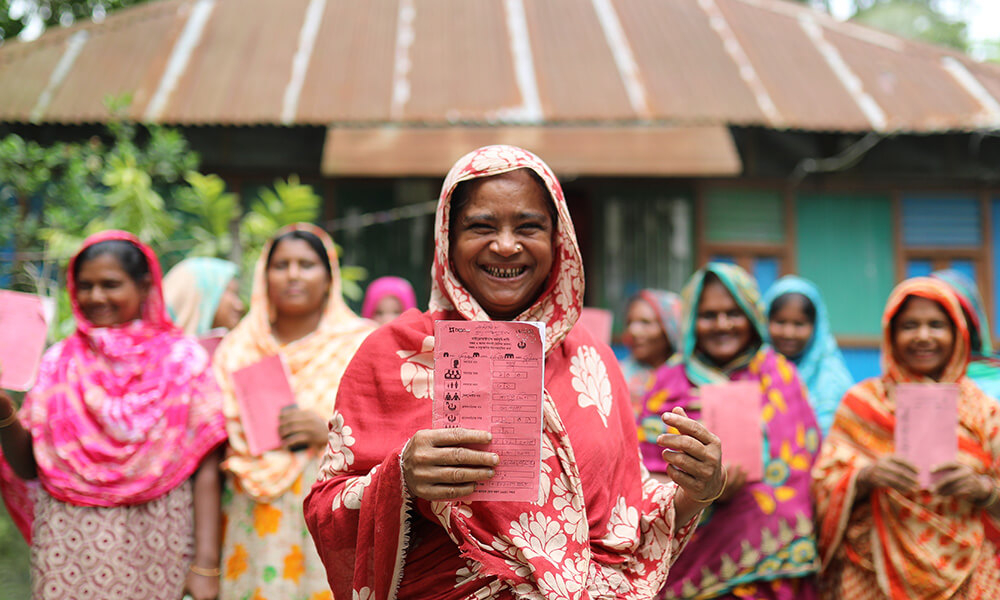

The (impact) performance mindset
This article was originally published in Impact Alpha on December 8, 2020
What on earth could connect 100 meter sprinting and impact measurement, two activities that, on the face of it, seem a world apart?
The answer, it turns out, is more than you might think. Traditional impact measurement, or monitoring and evaluation (M&E), was built to do two things. First, monitor if the actions an organisation said they would do actually happened. Then, once this has been confirmed, evaluate if those things worked, i.e., did those activities have a positive impact on people or planet?
That all sounds pretty logical as a solid way to measure impact and keep everyone on track. However, when you apply this thinking to the pinnacle of athletic performance, sprinting, we realise that it will never lead to world-beating impact.
Race day
Suppose you’re a 100 meter sprinter. You monitor your activities before a big race: did you buy the right shoes, eat right, train all you could? Check, check, check.
Finally, it’s here, race day. Time to evaluate the effectiveness of all that preparation. The gun goes off, you run your heart out, and you even come top of your heat with a time of 12.34 seconds. You think to yourself, “Hey– that’s pretty darn fast!”
And if sprinting were impact measurement, that is where your M&E would stop. You did what you said you would, and you were pretty fast: good job.
But any runner worth her salt wants to know how their performance compares to all the other runners. So do you! After you’ve finished your heat, other runners take to the track. As the day wears on, more times are posted, and your position keeps dropping. By the end of the day, you learn that rather than 1st, you’ve placed 23rd out of 70 runners. Good, but not great.
The social entrepreneurship marathon
If you’re a social entrepreneur or impact investor, you’re running a marathon, not a sprint. Nevertheless, the story of having data that doesn’t measure up — data on your performance but with nothing of relevance to compare to — surely sounds familiar.
As a sector, we have been collecting good information across how much was invested, sales figures, operations growth (“inputs”) and how many people a product or service has reached (“outputs”). Increasingly, more folks are going a bit further by measuring the equivalent of our own stop-watch — changes reported by customers or beneficiaries (“outcomes”).
However, getting back to our runner, too many of these efforts, especially those that try to get all the way to outcomes (and kudos to those that do), are effectively races run in isolation. Time and time again we hear from clients how frustrating this is: metric A increased by X%, but how do I know if that is any good? Who can I compare myself to? Where are the other runners?
A performance mindset
These types of questions are the hallmark of a “performance mindset,” a commitment to measuring outcomes and maximizing performance relative to peers. Such a mindset is essential for all funders, firms and foundations seeking not just to monitor and evaluate good impact, but to understand and strive for record-breaking, maximum impact.
Benchmarks are the fundamental means of understanding performance relative to others. Just as it is for finance, sport, or any other walk of life where performance matters, the key lies in standardization and repetition.
To that end, over the past six years, our team at 60 Decibels has collected social outcomes data from more than 150,000 customers. By working with our network of over 800 research assistants in 50 countries and asking standardized survey questions of end-customers or beneficiaries in the same way across hundreds of projects, we’ve been able to develop benchmarks of impact performance.
These are benchmarks not just of who has reached the most people, or who, based on a third-party piece of research should “in theory” have created the most impact. Rather, these are benchmarks drawn from real people describing their own lived experience, turned into quantitative measures of performance which are supported by qualitative insights. And we’re committed to sharing these benchmarks with the sector so everyone has a yardstick from which to judge their social impact performance, so that relative leaders can be distinguished from laggards on the basis of comparable metrics, and so that we can all improve.
In our latest benchmark report, we’ve published performance data for eight sector-agnostic benchmarks which provide insights across off-grid energy, financial inclusion, agriculture, and education, and are aligned to the Impact Management Project’s Dimensions of Impact. These benchmarks can help anyone in the social-sector make more informed, data-driven decisions about how to maximize impact.
Benchmarks bring out the best
Benchmarks drive a very interesting shift in behavior. Where one-time measures of impact feel somewhat esoteric, or obscure, the act of setting a benchmark naturally sharpens our focus and interest in the numbers.
Humans generally want to do well, especially those that are foolhardy enough to start an enterprise or raise an investment fund. So as soon as someone sees their own performance against even a handful of others (and the golden rule in benchmarking is the more the merrier, but also one is better than none) they start to think differently about the data. If they are top of the class they want to stay there, and if they are behind, they want to improve. Benchmarks, it turns out, are a fundamental catalyst of decision-making.
Take our sprinter: without the comparison, she too might have been satisfied with 12 odd seconds. But with it, she’s motivated to do more. She heads back to training with new energy and new focus. She now knows what’s possible, and what is required to achieve it. Bring this same attitude to social organizations and measurement, and we all create bigger, better, faster impact. Bring on the benchmarks.
At 60 Decibels, Tom Adams is a co-founder, Kelsey Jarrett is a senior business development associate and Ashley Speyer is a manager.
To learn more, tune in to The Volume, 60dB’s monthly collection of things worth reading.
